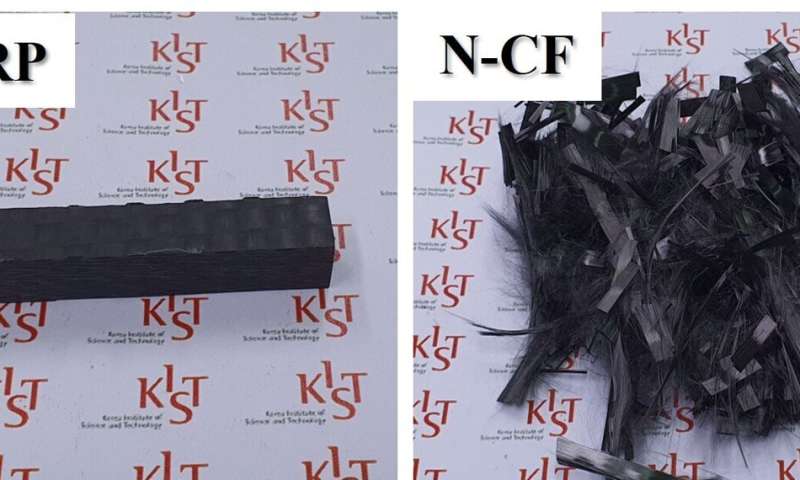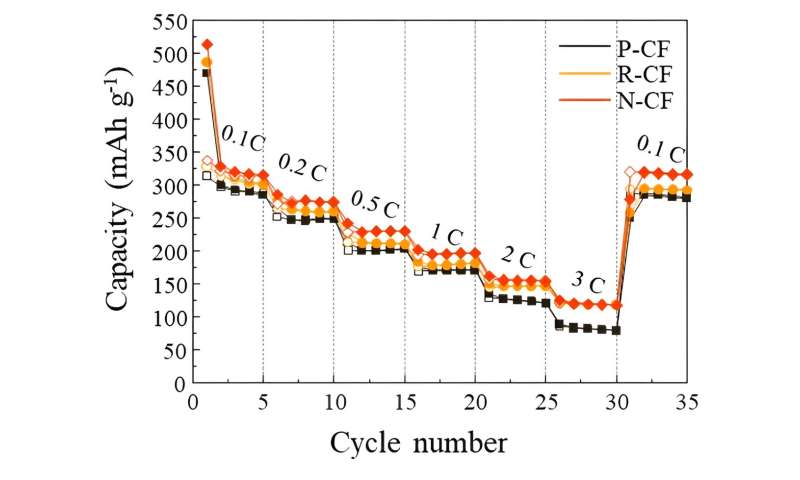This article has been reviewed according to Science X's editorial process and policies. Editors have highlighted the following attributes while ensuring the content's credibility:
fact-checked
peer-reviewed publication
trusted source
proofread
Recycling carbon fiber reinforced plastics waste is a challenge, but researchers find a way to make it work

Carbon fiber reinforced plastics (CFRP) are lighter and stronger than metal and are used in a variety of industries, including aviation, aerospace, automotive, marine, and sporting goods. In recent years, it has also been applied to new industries such as air mobility, which has led to an increase in its use and a waste disposal problem. However, CFRP is not naturally degradable, and high-temperature incineration methods emit toxic substances and cause environmental pollution, so it is urgent to develop recycling technology.
A research team led by Yong-chae Jung, director of the RAMP Convergence Research Center (Convergence Research Center for Recyclable Air Mobility, Materials and Platform), has developed a technology that recycles more than 99% of CFRP materials within tens of minutes by using water in a supercritical state, which occurs under conditions of temperature and pressure above a certain level. The work is published in the journal Carbon.
Supercritical water has a high polarity, diffusivity, and density that allows it to selectively remove only the epoxy impregnated in the CFRP to obtain recycled carbon fiber. The researchers achieved a highly efficient recycling system using only water without using any catalysts, oxidants, or organic solvents. They also found that adding glycine to supercritical water can upcycle CFRP into recycled carbon fiber doped with nitrogen atoms.
This upcycled carbon fiber has better electrical conductivity than conventional recycled carbon fiber. This is the first time that a single recycling process has been used to simultaneously recycle and upcycle CFRP within tens of minutes, controlling the structure and properties of the recycled fiber.
-

Before and after images of CFRP (Carbon fiber reinforced plastic) recycled into water. Credit: Korea Institute of Science and Technology -

Battery capacity evaluation of upcycled, recycled and pristine carbon fiber. Credit: Korea Institute of Science and Technology
Until now, recycled CFRP fibers have been limited to being used as fillers in composites due to their inhomogeneous properties. In comparison, the team's upcycled carbon fibers performed as well as or better than graphite in coin cell evaluations when applied as electrodes in e-mobility batteries.
"As the amount of carbon fiber reinforced plastics (CFRPs) waste is increasing globally, we have developed a technology to upcycle it in an eco-friendly way," said Yong-chae Jung.
"It is a meaningful research achievement that not only dramatically reduces carbon emissions, but also presents a virtuous cycle of resources that can be converted into battery electrode materials for E-mobility."
More information: Young Nam Kim et al, Simultaneous recycling and nitrogen doping in carbon fiber reinforced plastic using eco-friendly supercritical water treatment for Li-ion batteries anode application, Carbon (2024). DOI: 10.1016/j.carbon.2024.118944

















